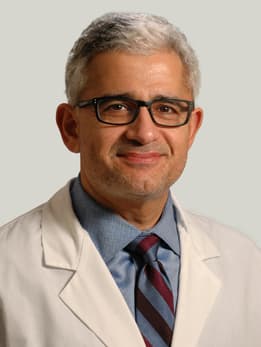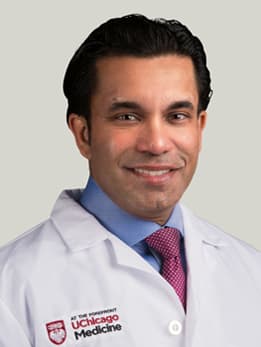Managing Gordy Zanders' coronary artery disease with minimally invasive surgery

Gordy Zanders thought his retirement in the Milwaukee, Wisconsin suburb of Menomonee Falls would be filled with golfing, spending time with his wife and studying art. Since Zanders retired in January 2017, there’s been a lot of that. What he didn’t anticipate was having a miniature drill coated in diamond micro-particles shaving dangerous calcium deposits out of the arteries in his heart.
Within the first month of his retirement, Zanders and his wife Jennifer joined a local health club and started working out regularly.
“I got tired a little quicker than I would have thought,” Zanders said. “But I didn’t notice anything that triggered a medical concern.”
A heart attack ten years earlier, though, would make yearly visits to his heart doctor necessary.
During this year’s visit, Zanders climbed atop a treadmill for a stress test. A couple rounds in, his doctor discovered an issue that needed further investigation. They found, through catheterization, that a chunk of calcification was blocking his main coronary artery.
Zanders’ doctor referred him to Husam Balkhy, MD, UChicago Medicine associate professor and director of minimally invasive and robotic cardiac surgery. Balkhy is an expert in his field and one of only a handful of surgeons experienced in performing a procedure called TECAB, or totally endoscopic coronary artery bypass grafting.
“I feel great and am doing all the things that I would hope and expect to do.”
During TECAB, which is the least invasive bypass procedure available, surgeons avoid breaking open the sternum by robotically operating through fingertip-sized slits in the chest cavity. The chest stays closed the entire time, and patients recover much more quickly than they would through open heart surgeries. After reviewing Zanders’ case, however, Dr. Balkhy thought UChicago Medicine had an even better solution for his case. He recommended Zanders see Sandeep Nathan, MD, associate professor of medicine and director of UChicago Medicine’s Coronary Care Unit.
“Meeting with Dr. Balkhy and Dr. Nathan was like being exposed to the major leagues of health care,” said Zanders. “Both those guys were awesome, and they spent an hour and a half explaining everything to me and my wife.”
Nathan suggested he perform a complex coronary intervention. In this procedure, he would use a catheter, threaded through an incision in the wrist, to place a stent. The stent would then open up blood vessels in the heart that had narrowed because of the calcium buildup. To shave away at the calcium buildup, a drill coated in diamond micro-particles would then rotate in an orbit.
“I think we got a great result with the vessel we were working on,” said Nathan. “I told him coronary artery disease is a lifelong suppression effort, not a cure, and I was actually very pleased with how things went.”
The procedure lasted about two hours.
“He went home the next morning with just a Band-aid on his wrist,” Nathan said. “We offer a very broad line of options for patients with cardiovascular disease and have the ability to think collectively instead of just paying lip service to a team approach. This patient came in as a TECAB consideration and left having a coronary intervention.”
Zanders knows he’s not totally out of the woods yet. He’s on a blood thinner for several more months to prevent any potential clotting and plans to continue his annual checkups with his heart doctor.
“Besides that,” he said, “I feel great and am doing all the things that I would hope and expect to do.”
Totally Endoscopic Coronary Artery Bypass (TECAB) Surgery
Totally endoscopic coronary artery bypass (TECAB) surgery is a breakthrough approach to performing coronary bypass surgery.
Learn more about TECAB surgery

